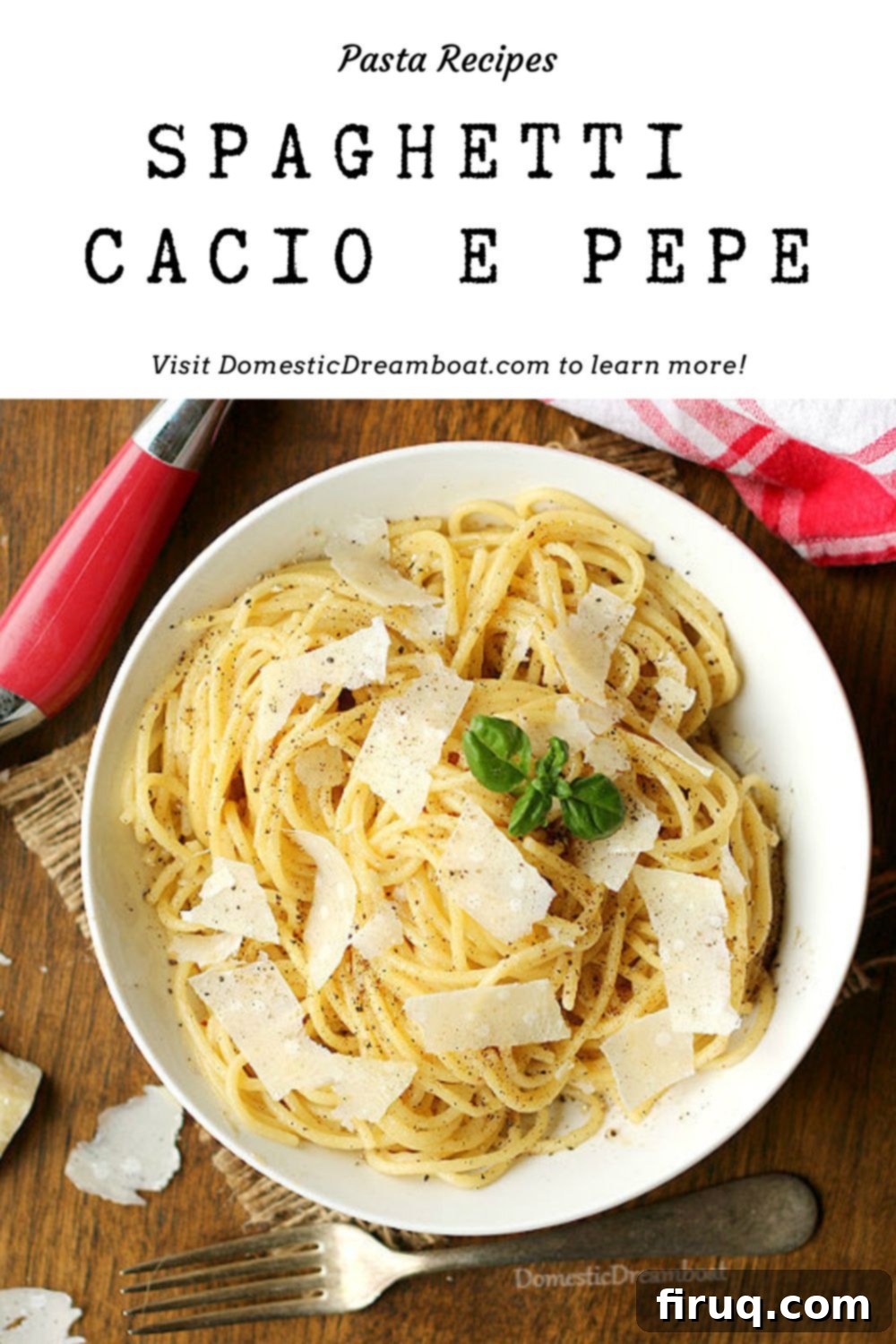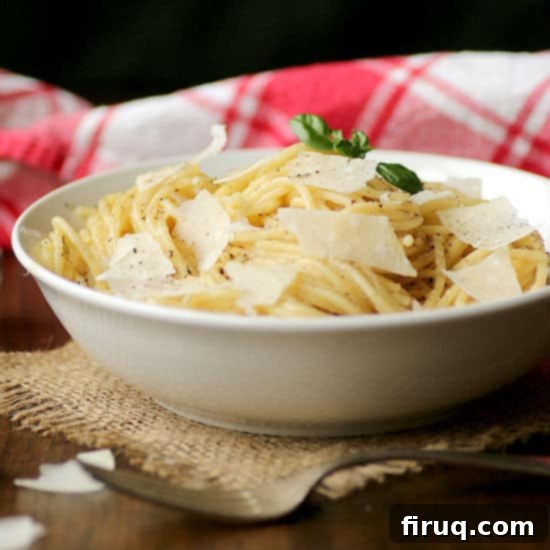The Ultimate Guide to Authentic Cacio e Pepe: An Easy & Creamy Roman Spaghetti Recipe
Spaghetti Cacio e Pepe, meaning “cheese and pepper” in Roman dialect, is much more than just a pasta dish. It’s a culinary masterpiece crafted from just a handful of humble ingredients, transforming them into an incredibly rich, creamy, and flavorful meal. This iconic Roman classic is surprisingly quick and easy to prepare, making it a perfect choice for a weeknight dinner, yet elegant enough to impress guests. You’ll have this delectable pasta on your table in the time it takes to boil spaghetti, proving that simplicity truly can be the ultimate sophistication in cooking.
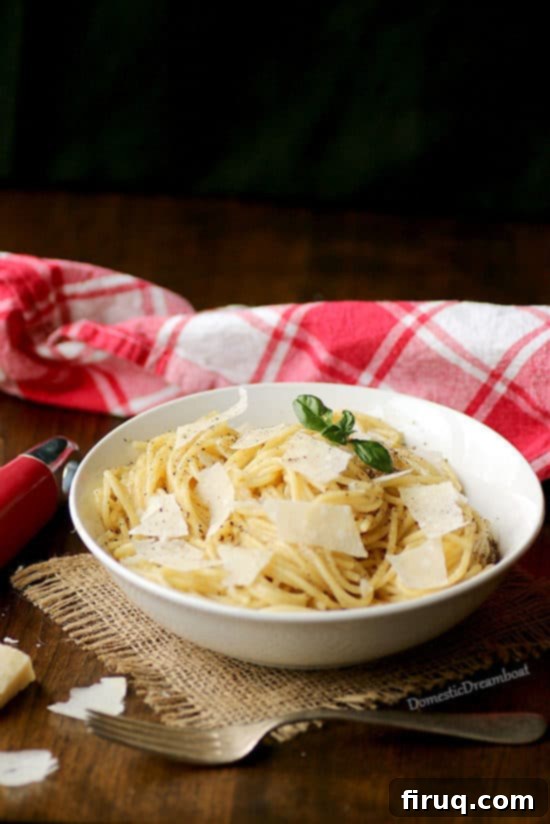
In recent years, the humble Cacio e Pepe has soared in popularity, becoming a true sensation across social media, culinary blogs, and restaurant menus worldwide. It seems to be everywhere, from casual trattorias to fine dining establishments, captivating food lovers with its minimalist yet utterly satisfying profile. While it might feel like a new trend, this Roman staple has graced Italian tables for centuries, a testament to its timeless appeal and comforting flavors.
If you’re anything like me, a few years ago you might have struggled to even pronounce “Cacio e Pepe,” let alone know what it was. But once you discover the magic of this dish – how simple ingredients combine to create such a profound taste – it quickly becomes an obsession. Its recent explosion in popularity has certainly helped bring it to the forefront, but its true staying power lies in its irresistible taste and the sheer joy it brings with every forkful.
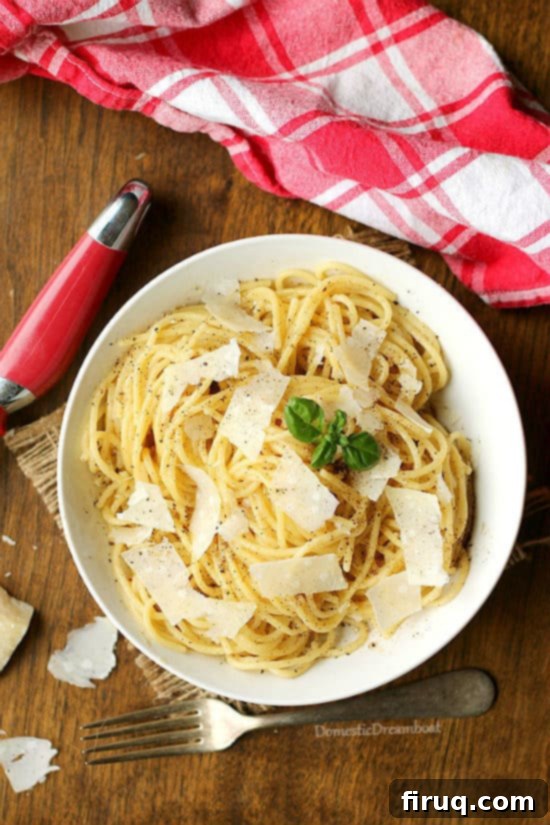
What Exactly is Cacio e Pepe? A Roman Culinary Gem
At its core, Cacio e Pepe is one of the most quintessential Roman pasta dishes, celebrated for its elegant simplicity. The name itself, “Cacio e Pepe,” directly translates from the Roman dialect to “cheese and pepper,” perfectly encapsulating the dish’s main components. Traditionally, it’s made with Pecorino Romano cheese, a sharp, salty sheep’s milk cheese, which is a hallmark of Roman cuisine. However, many contemporary recipes, including this one, use high-quality Parmesan (Parmigiano-Reggiano) due to its wider availability and slightly milder, nutty flavor profile, which can be equally delicious and provide a similar creamy texture.
Just like any recipe with a minimalist ingredient list, the success of Cacio e Pepe hinges entirely on the quality of those few ingredients. There’s nowhere for subpar ingredients to hide. This means investing in premium pasta, a robust extra virgin olive oil, freshly ground black pepper, and, most critically, excellent cheese. Each element plays a vital role in building the depth and complexity of the final sauce.
The Essential Ingredients: Why Quality Matters
- Good Quality Pasta: The foundation of any great pasta dish. Look for pasta made from durum wheat semolina, ideally with a slightly rough texture that helps the sauce cling better. Spaghetti is the classic choice for Cacio e Pepe, but bucatini or tonnarelli also work beautifully.
- Excellent Olive Oil: Have you ever tasted your olive oil on its own? If not, I highly recommend it. If you don’t enjoy its flavor straight from the spoon, it won’t magically improve in your cooking. Choose a good quality extra virgin olive oil with a pleasant, fruity, or peppery note. I personally favor Kirkland Signature Organic Extra Virgin Olive Oil for its consistent quality and value, proving that great olive oil doesn’t always have to break the bank.
- Freshly Ground Black Pepper: This is not the time for pre-ground pepper from a jar. Freshly ground black pepper, preferably a coarse grind, provides a much more aromatic and pungent flavor that is crucial to the “pepe” in Cacio e Pepe. Toasting the peppercorns briefly in olive oil before adding other ingredients enhances their flavor even further, releasing their essential oils and adding a delightful warmth and depth to the sauce.
- Premium Cheese (Pecorino Romano or Parmesan): This is arguably the most critical component. While Pecorino Romano is traditional, a high-quality Parmesan (Parmigiano-Reggiano) is a fantastic alternative. The key is that it *must* be freshly grated from a block.
The Unforgivable Sin: Pre-Shredded Cheese
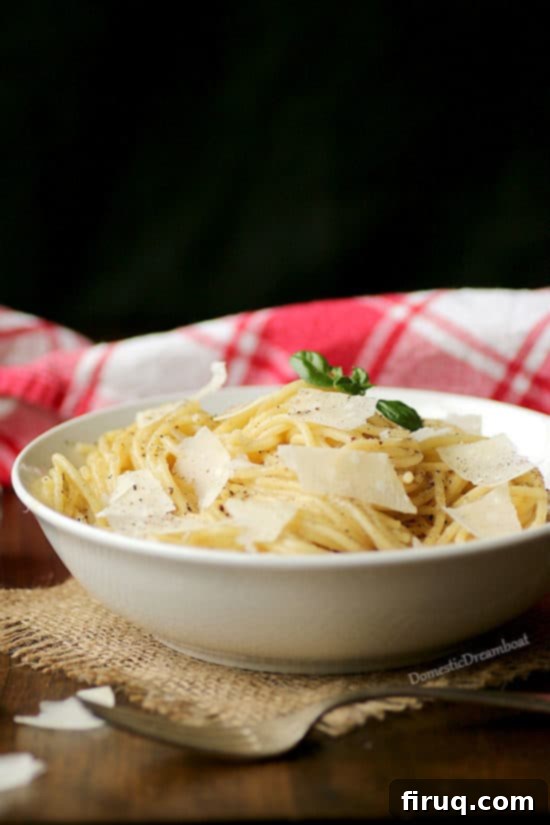
Whatever you do, please, for the love of perfectly creamy pasta, avoid pre-shredded Parmesan cheese (and definitely steer clear of the powdered stuff in a shaker!). While the shaker cheese might hold a nostalgic place for some (my kids, for instance, swear by it on pizza or plain buttered pasta), it has absolutely no business in a dish where a silky, emulsified sauce is paramount.
The issue with pre-shredded cheese, typically found in bags in the dairy aisle, is the anti-caking agents. These powders, often cornstarch or cellulose (yes, the “wood pulp” you might have read about in click-bait headlines, which is actually harmless fiber), are added to prevent the cheese shreds from clumping together. While not harmful, these agents prevent the cheese from melting smoothly. When heated, they can lead to a grainy, clumpy, or stringy texture in your sauce, completely ruining the velvety consistency that Cacio e Pepe is known for.
Making a truly authentic and creamy Cacio e Pepe sauce relies on the cheese’s ability to emulsify with the starchy pasta water and olive oil. The anti-caking agents in pre-shredded cheese interfere with this delicate process, making it incredibly difficult, if not impossible, to achieve that desirable smooth, luscious sauce. A few extra minutes spent grating your own cheese from a block is a small price to pay for culinary perfection. If you’re making a larger batch or find hand-grating tedious, a food processor or even the grating attachment of a stand mixer can make the job quick and effortless. This small step makes a monumental difference in the final outcome of your Cacio e Pepe.
Beyond Cacio e Pepe: More Irresistible Pasta Recipes
If you’re a pasta enthusiast, you’re in the right place! Cacio e Pepe is just one of many incredible pasta dishes that deserve a spot in your rotation. Whether you’re craving hearty comfort food, a fresh vegetarian option, or something uniquely flavorful, there’s a pasta recipe for every mood. Explore these other fantastic options to expand your pasta repertoire:
Cacio e Pepe: Nutrition Notes & Serving Suggestions
While Cacio e Pepe is inherently rich and satisfying, it can be part of a balanced meal. To make it a complete and nutritious dinner, serve this delicious pasta dish alongside a crisp, simple green salad. A light vinaigrette dressing, perhaps made with good quality olive oil, a touch of vinegar, and a pinch of salt and pepper, will complement the flavors of the pasta beautifully without overpowering it. This adds freshness and essential vitamins and fiber, creating a well-rounded and delightful dining experience.
Spaghetti Cacio e Pepe
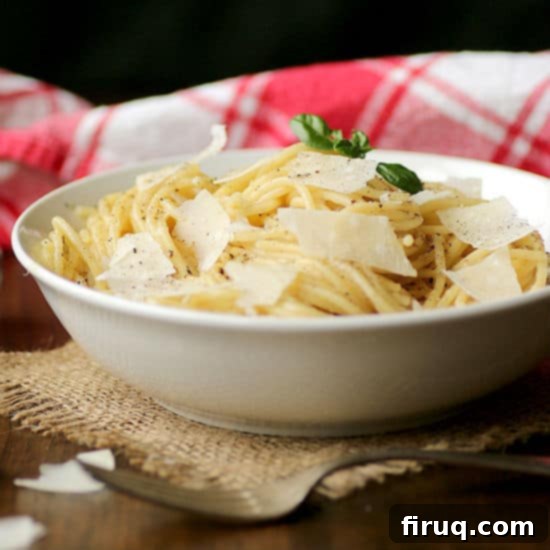
Print Recipe
Pin Recipe
Ingredients
- Salt
- 1 pound spaghetti (use gluten-free spaghetti to make this recipe gluten-free)
- 3 Tablespoons extra virgin olive oil
- 1 teaspoon freshly ground black pepper, plus more to serve (coarsely ground is best)
- 3.5 ounces (100 grams) Parmesan cheese, finely shredded from a block (about 1 1/3 cups), plus more to serve
Instructions
-
Bring a large pot of water to a rolling boil over high heat. Add a generous amount of salt to the water, making it taste fairly salty, similar to seawater. Add the spaghetti to the boiling water and cook according to the package directions until al dente. Crucially, before draining, reserve at least 1 cup of the starchy pasta water. This “liquid gold” is essential for creating the creamy sauce.
-
While the pasta cooks, heat the olive oil in a large skillet (or a wide, shallow pan) over medium heat. Add the freshly ground black pepper and cook, stirring constantly, until it becomes wonderfully fragrant, typically 30 to 60 seconds. Be careful not to burn it. Slowly pour in 3/4 cup of the reserved hot pasta water (it will sizzle and boil vigorously). Continue to stir and let it simmer for another 30-60 seconds, allowing the flavors to meld and the water to reduce slightly. Add the cooked spaghetti directly into the skillet with the pepper mixture. Immediately add the finely shredded Parmesan cheese. Toss everything vigorously with tongs, incorporating the cheese and liquid until a smooth, emulsified, and creamy sauce forms, coating every strand of spaghetti. If the sauce appears too thick or clumpy, add a tablespoon or two more of the reserved pasta water, one at a time, until the desired consistency is reached.
-
Divide the perfectly coated spaghetti into individual serving bowls. For an extra flourish and intensified flavor, top with additional freshly grated Parmesan cheese and a final sprinkle of freshly ground black pepper. Serve immediately and enjoy the simple perfection of this Roman classic!
Nutrition
Tried this recipe?
Please Consider Leaving a Review!
